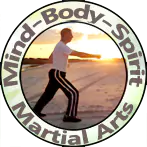As an instructor, you must stay calm no matter what the circumstance. If you do not, you will only make the situation more intense. If there are children present, and there is an unsightly scene such as excessive bleeding, call 911 immediately. If the student is a minor, his or her parents or guardian(s) should be notified.

Martial Arts First Aid:
Heart and Circulatory System
Select each topic to view its content.
Topic:
Chest pain is among the most difficult symptoms to interpret. If a student begins to have chest pain during class, do not ignore it. Have the student discontinue the class and sit on the side until he/she feels better. Continue to monitor the student to see whether his/her situation has improved. Periodically ask the student how he/she is feeling. If there is no improvement or if the pain increases, call 911.
If the student does not take in a sufficient amount of fluid, he or she will become dehydrated. Our bodies require a certain amount of fluid every day. The minimum amount is about one quart, depending on the student's age, type of vigorous training, body type, humidity and heat conditions.
Most heart attacks start slowly, and the body will send one or more warning signals that a heart attack is imminent such as chest pain, tightness feeling in the chest, cramping in the arms, legs, or neck. These advance signals may give the instructor sufficient time get the student to emergency care treatment. By the time the warning signs begin their onset, it is possible that the person's heart may have already incurred damage.
Excessive training particularly in the heat or high humidity may cause heat cramps. Heat cramps are brief, strong, painful muscular spasms and contractions. During a heat cramp, the affected muscle/muscles may seem to jerk involuntarily. They usually affect the back of the calves, inner thighs, abdomen and shoulders.
Ideally, the training temperature air should be 82 degrees (27 degrees Celsius) or under, without high humidity. Heat exhaustion is a mild form of heat-related illness that can develop after exposure to high temperatures and inadequate or unbalanced replacement of fluids. Reducing the amount of physical activity, moving cool air over the body, drinking adequate amount of fluids, and using precaution will keep the body at a safe temperature.
Heat stroke is the most severe form of a heat illness. Vigorous and excessive training in hot weather and/or in high humidity can affect the body's temperature control system to the point where the body can no longer cool itself off rapidly enough. If this occurs, the body will collapse and begin the process of protecting itself by ceasing all physical activity. If nothing is done to cool the body in time, or the condition is left untreated, serious physical and/or mental harm, possibly even death, may occur.
Shock is a life-threatening condition caused by decreased blood flow or decreased blood volume. It can result in permanent injury, organ damage and death. When a student goes into shock, he/she is completely dependent on your aid. The student will not be able to recover by himself or herself. The people helping the student must act promptly and correctly to save the affected student's life. Failure to do so may result in death.
If a student has a stroke, he/she may lose some or all mental and physical functions, such as loss of use of an arm and/or leg, unable to speak, drooping of one side of the face, enter into a coma, become paralyzed, or even die. If a student were to have a massive stroke, where the blood flow to the brain is stopped by a ruptured artery or a blood clot, he/she would die within four minutes without major medical intervention.







